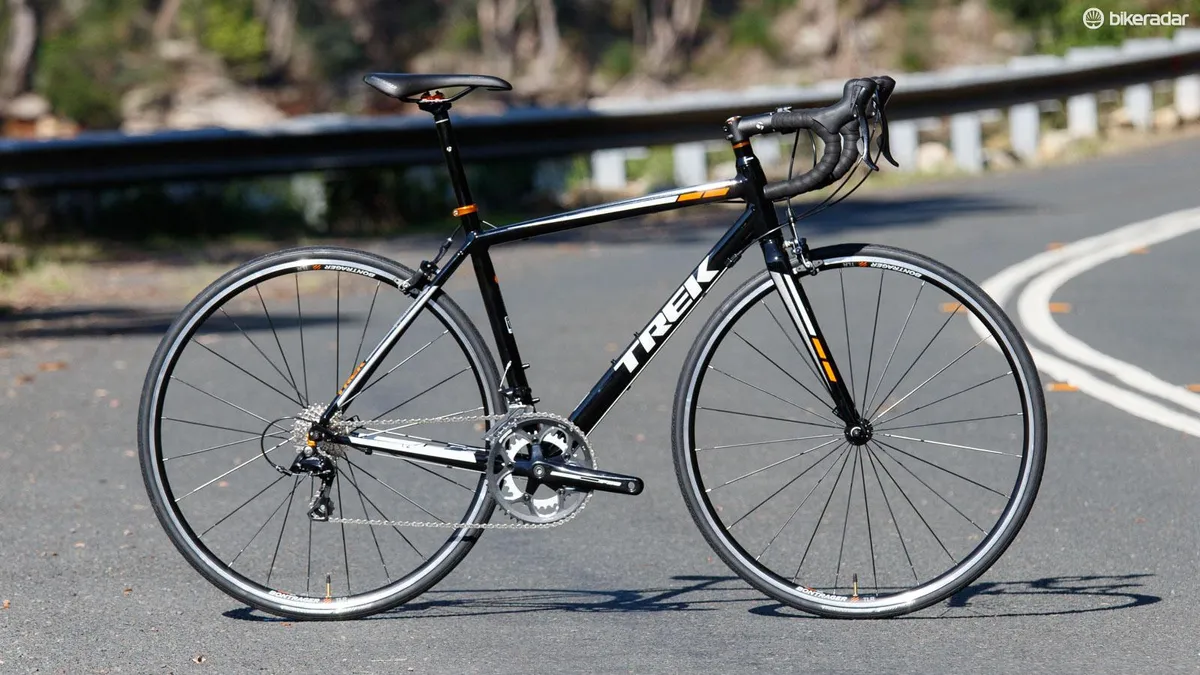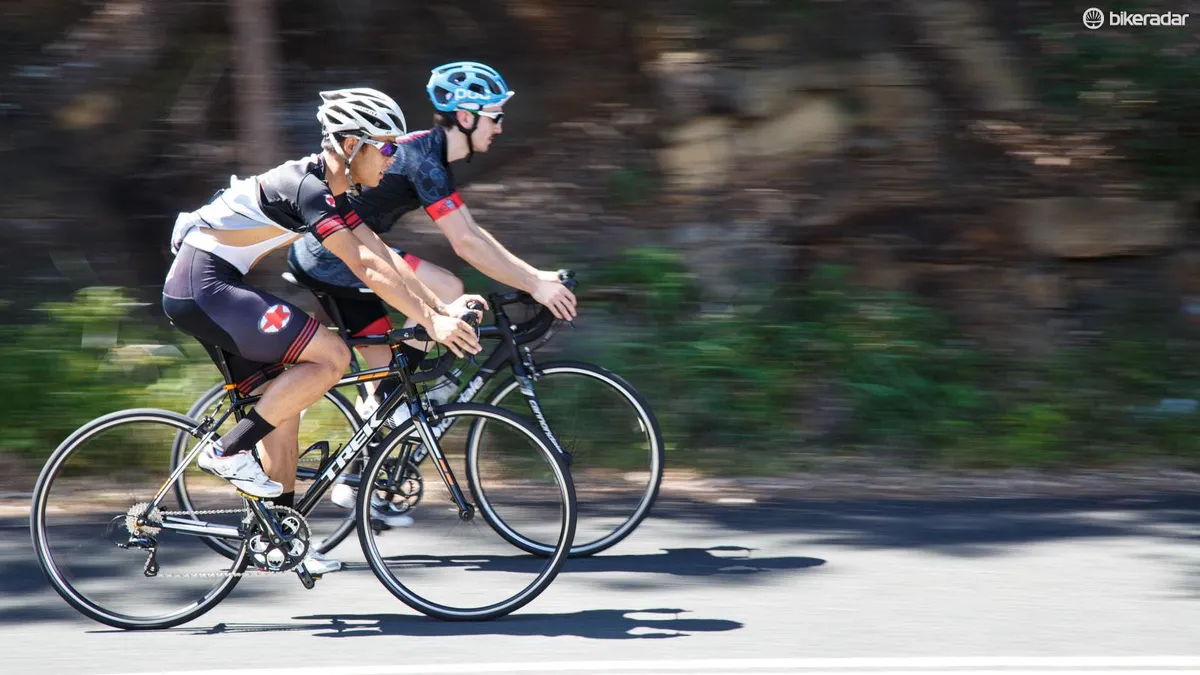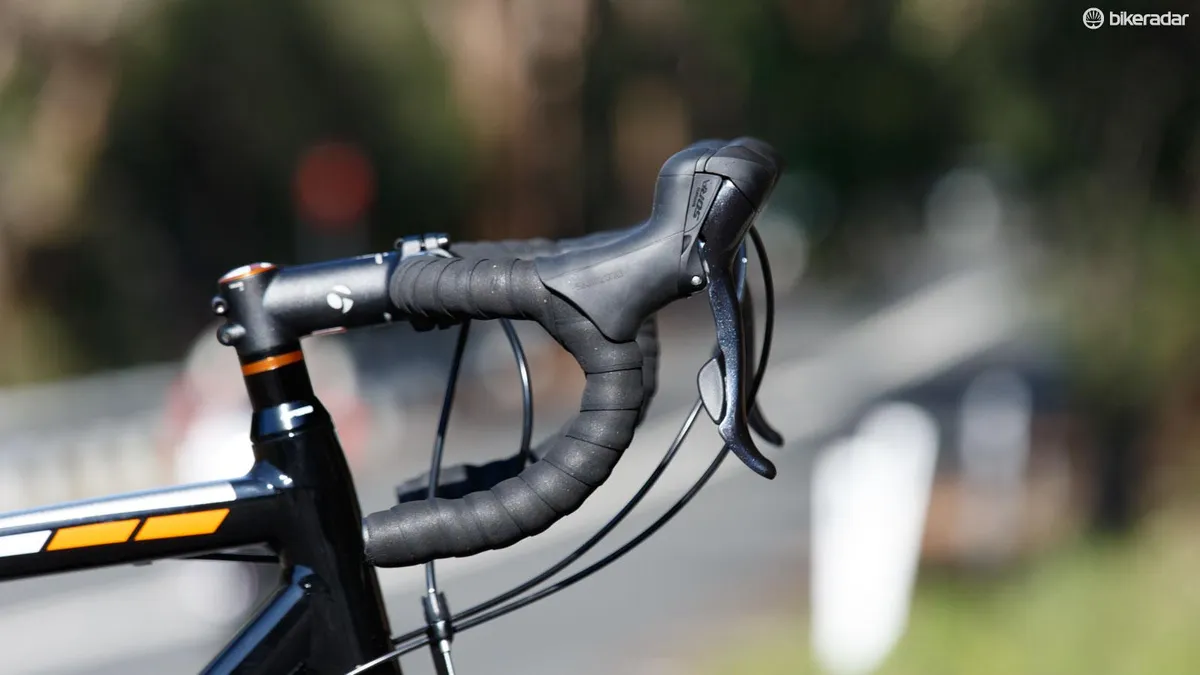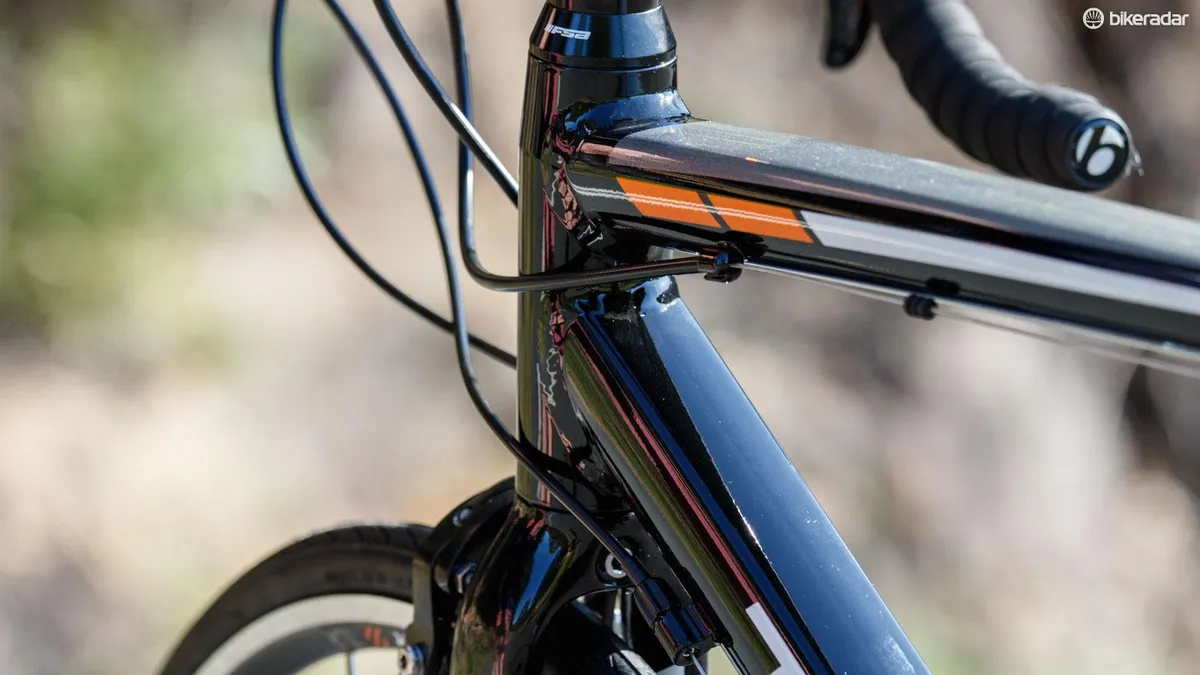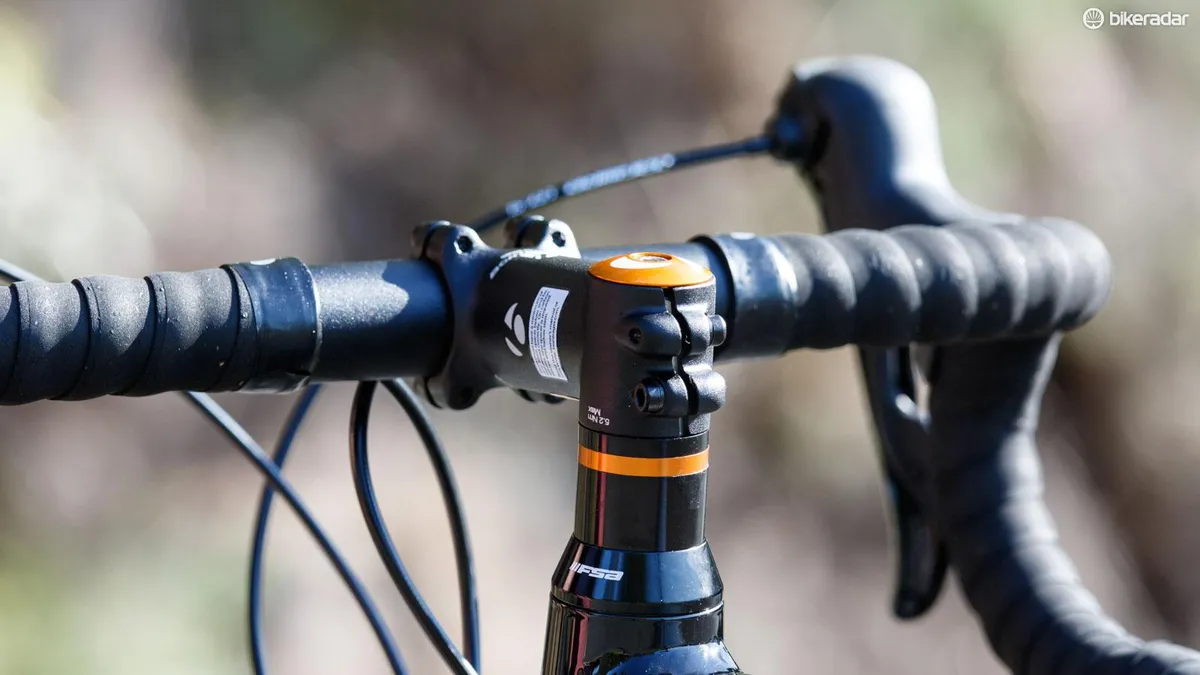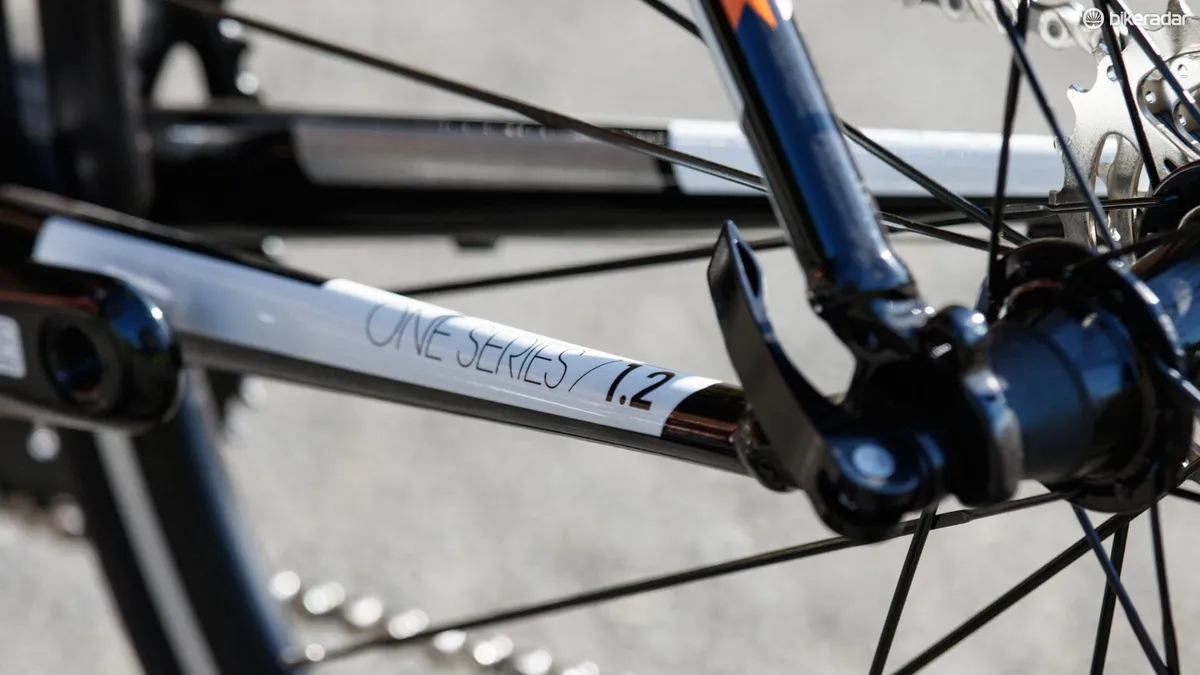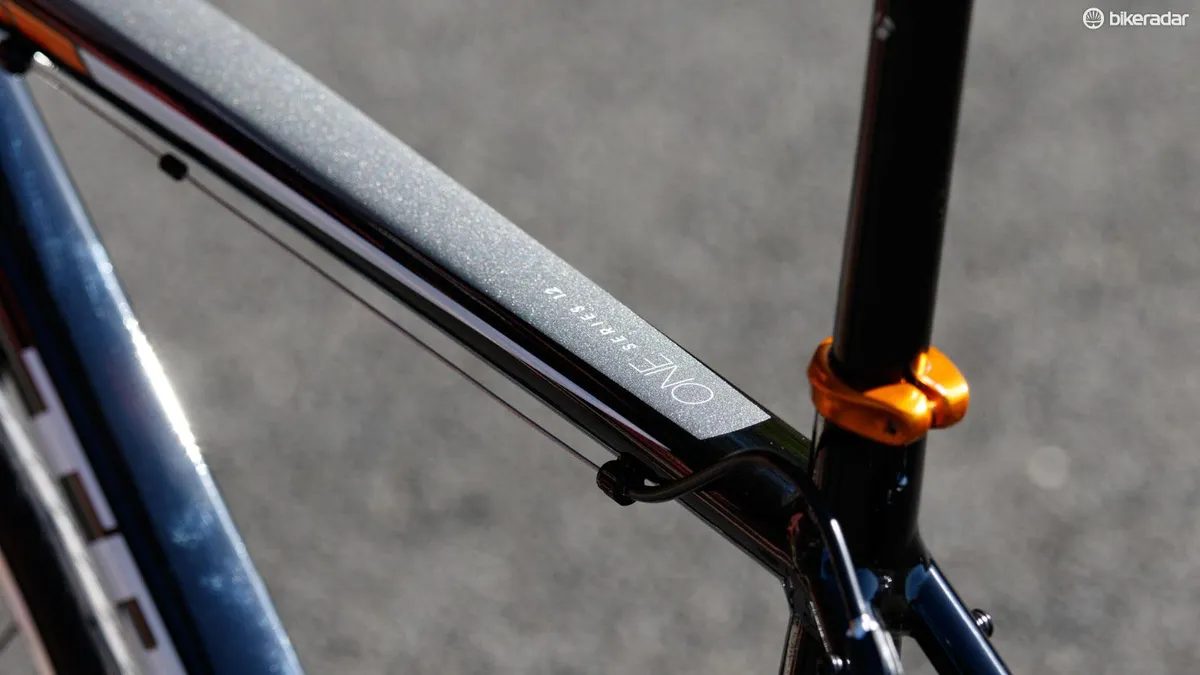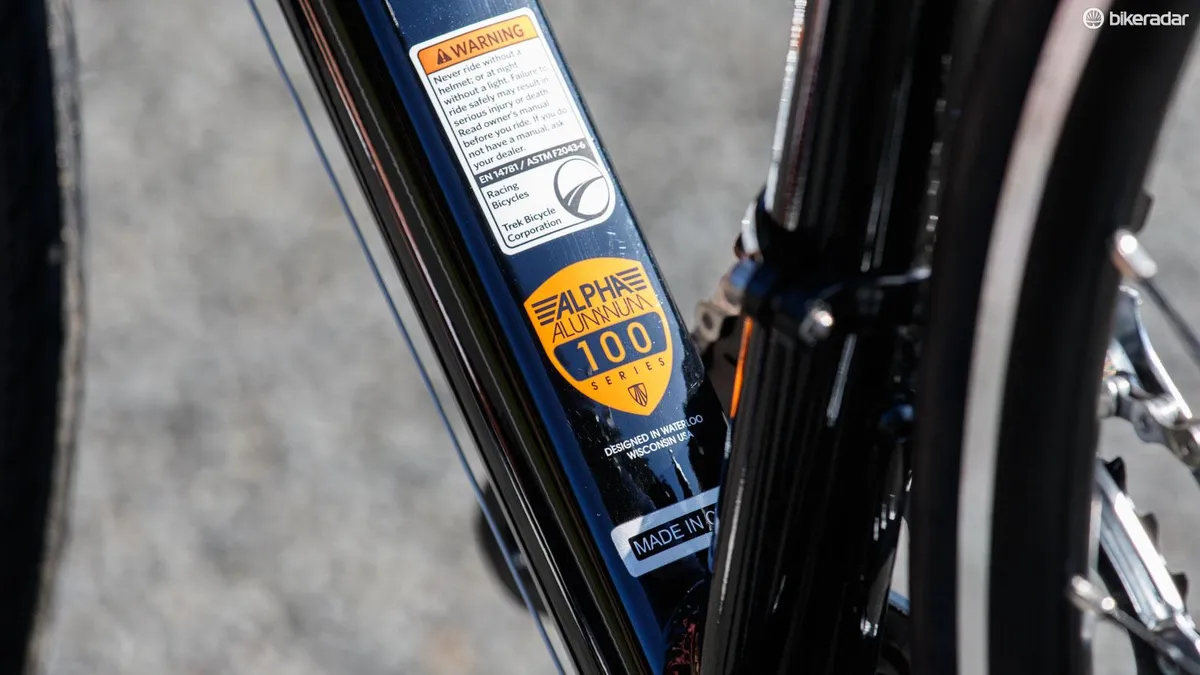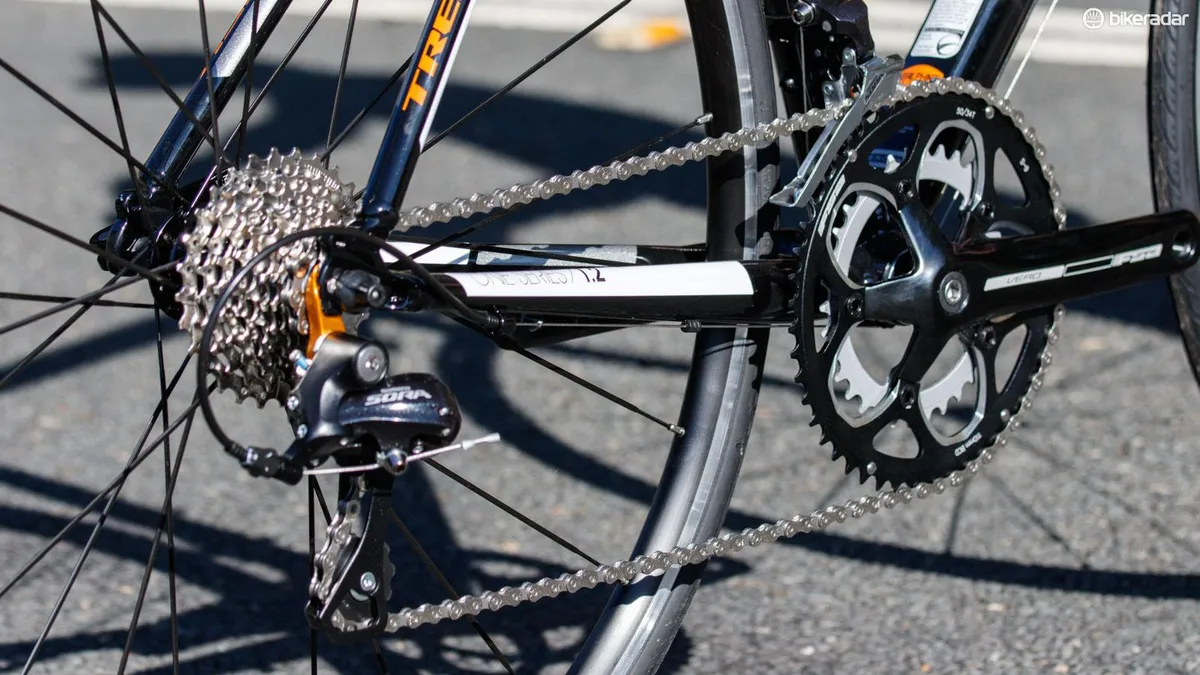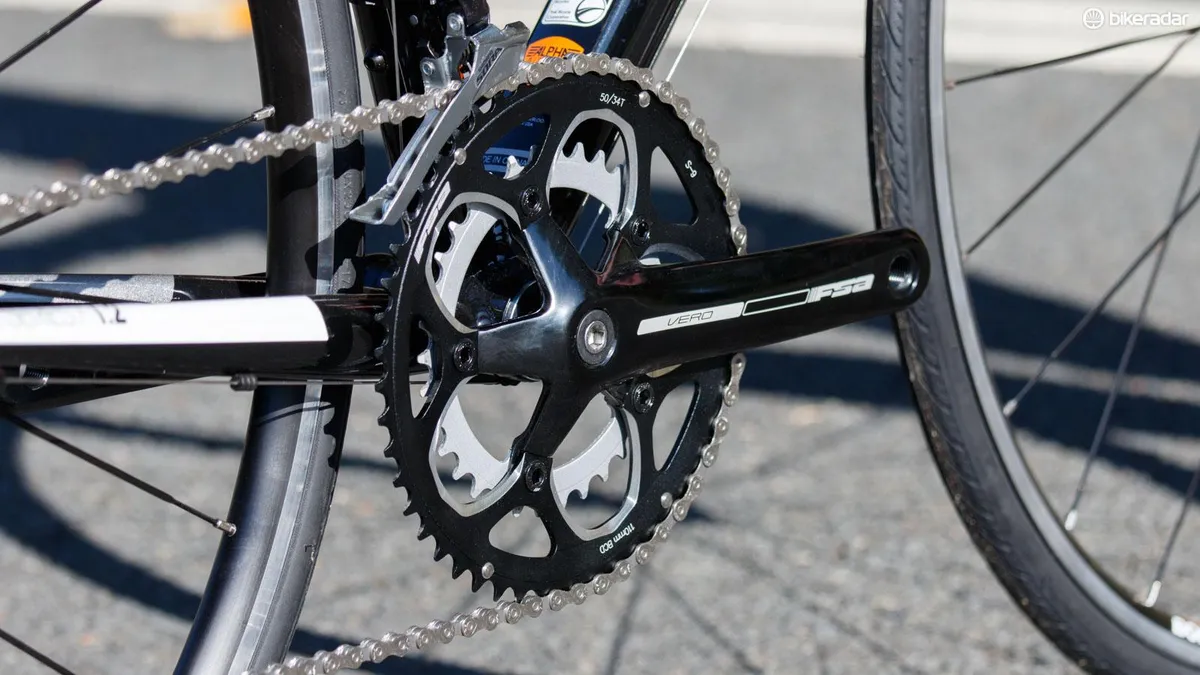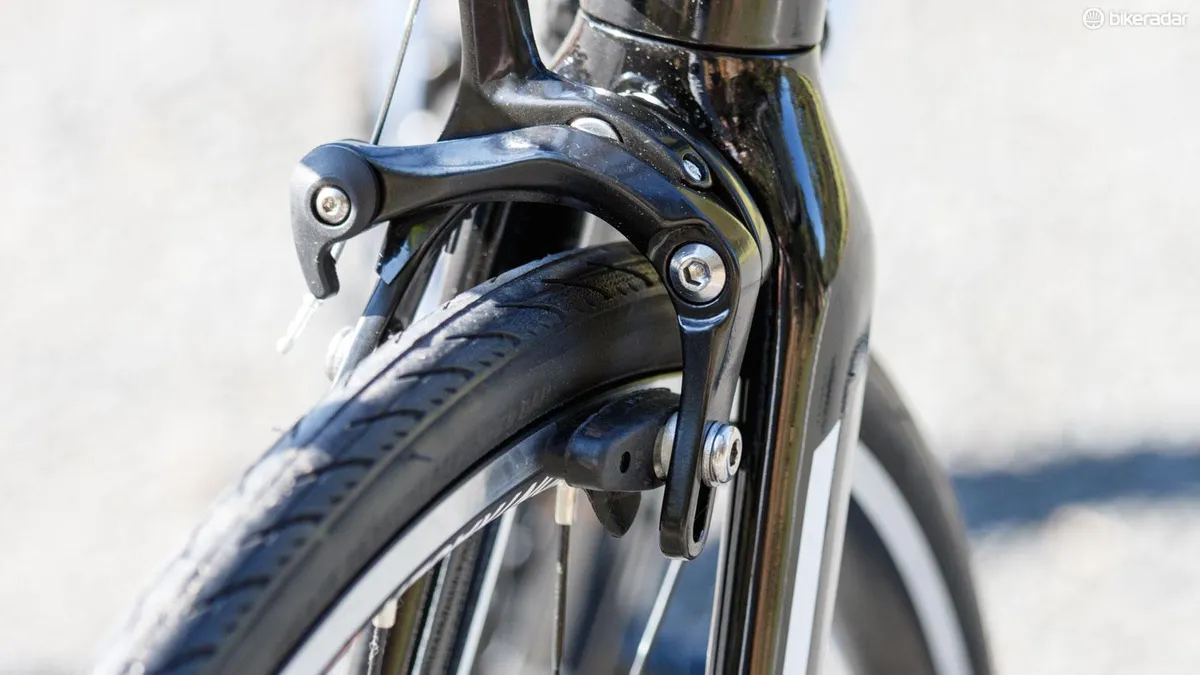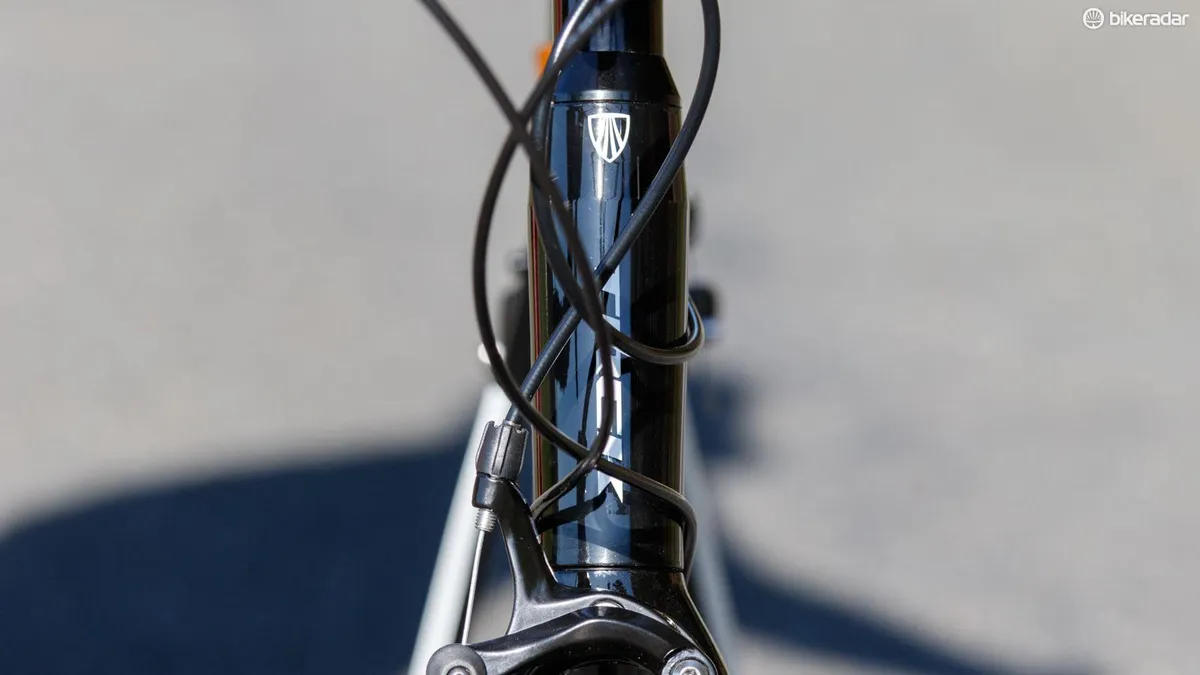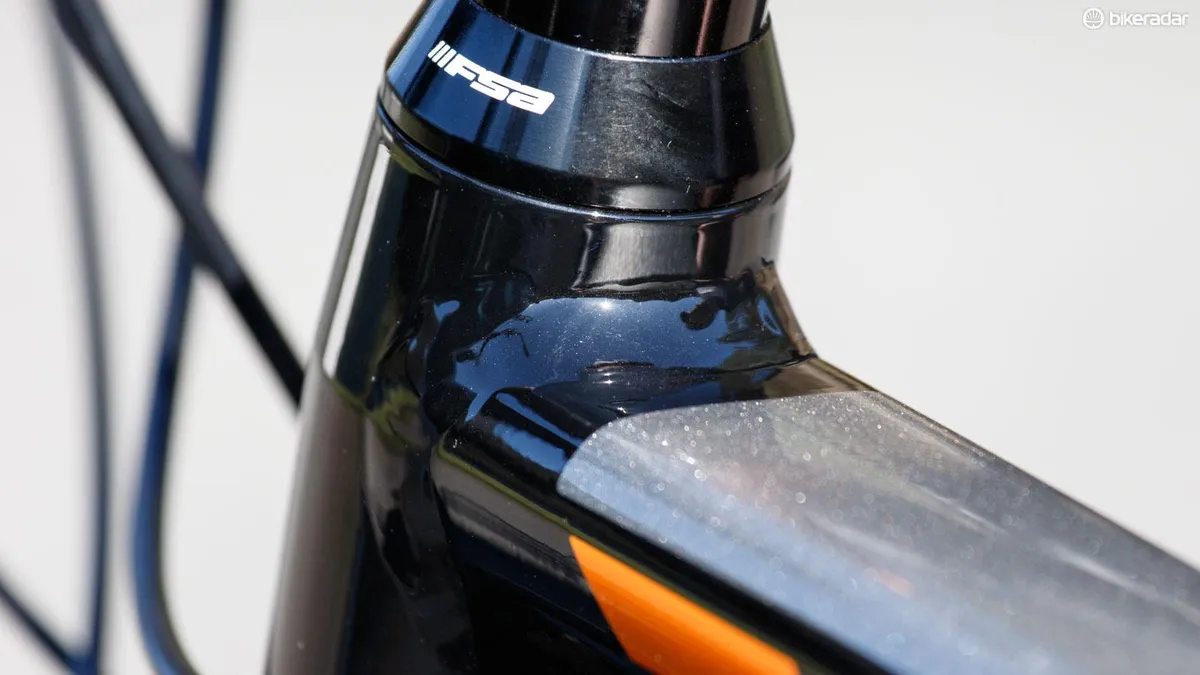We so often expect the finest from Trek, and more than a few BikeRadar staff personally own bikes from the American brand. Sadly, the 1.2 just left us wanting more when we rode it back-to-back with its latest direct competitors as part of our best entry-level 2016 road bikes shootout.
Looking on the bright side, there are very few bad bikes when looking at the biggest and most trusted brands. And the 1.2 isn’t a bad bike by any stretch of the imagination, but it does need a few small component upgrades in order to showcase its true potential.
Related: Best entry-level road bikes: US/Aus / UK
Balanced and reactive ride, some nerve-wracking kit choices

The 1.2 places the rider in an easy and upright riding position
Featuring Trek’s well-respected ‘H2’ geometry, the 1.2 offers a comfortable ride position for the recreational cyclist. With this, the front-end height of the 1.2 allows for a reasonably upright position, without compromising the descending composure of the bike.
The 1.2's handling is a strong point and compared favourably against all the bikes in our shootout, with a good feel for the road in both stability and feedback. Line up for a corner, and the bike keeps to that line, without signs of over or under-steer.
While the frame isn’t the most compliant we’ve ridden, it’s no rattle can either – meaning the 1.2 holds its composure on rutted roads. The 1.2 is, however, one of the rougher bikes we tested, and that's something that the hard tyres must take responsibility for.
Ride comfort is a tough point to discuss as this price point, with so much variance given by tyre and saddle choice. So while it may not be fair to judge a bike on its tyres or saddle choice once you get higher up the ladder, here a simple change of rubber could add as much as 20% to the bike’s original price.
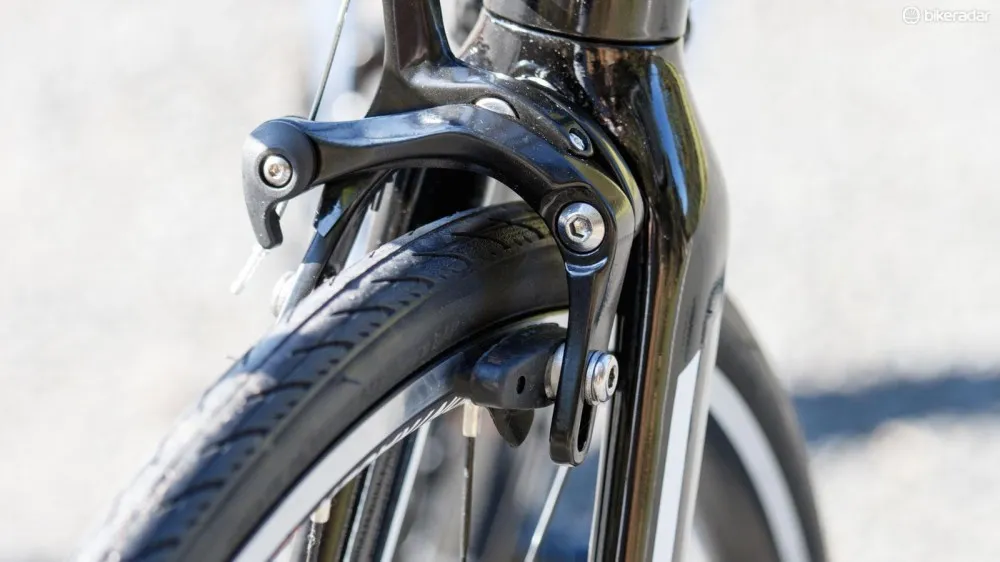
Between these brakes and tyres, the 1.2 can feel a little nervous
Trek’s own component brand, Bontrager, makes some incredibly good parts. But the T1 tyres on this bike are a budget choice and feature a rubber compound and construction that hurts the 1.2’s compliance and traction.
With this, the other five bikes we tested all feature 25mm (25c) width tyres, whereas the 1.2 offers 23mm (23c). With less air volume to absorb road shocks, the tyres are further disadvantaged by a stiff construction (though this does at least do well to fight off flats).
The tyres strike again when hitting corners at speed, where the harder rubber compound feels nervous and lacking in road hold. It’s a sensation you really don’t want to experience in any bike, let alone one that claims to offer the race inspiration of its premium siblings.
Further compounding the issue, the Trek 1.2’s brakes are the joint-worst out of the bikes we tested (more on which below). This makes the approach into corners all that more nervous as lacking power typically makes you overbrake.
When you do not want to slow down, the 1.2 accelerates impressively and with aggression. Under hard sprints the frame shows little give, and despite the weight, the wheels have a responsive feel.
Unflashy but competent frame

The Trek 1.2 is the only bike on test with a 'UCI-approved' sticker. Though to be honest, it's not really important
Made of Trek’s ‘Alpha 100 series' alloy, this road frame offers trickle-down from Trek's illustrious Madone series of bikes. With this, the square-profile hydroformed tube shapes are claimed to draw on the Madone’s aerodynamic designs.
Despite our issues with the kit, there’s little to complain of in the frame. While its rather straight-line tube shapes may lack flash, it does everything it should and demonstrates a respectable build quality.
There’s nothing fancy about the 1.2’s frame or fork, but that’s also part of the appeal. The bottom bracket is threaded, the cables are externally routed and the head tube features commonly available bearings. And when it comes time to clean it, the paint is a silky-smooth gloss finish.
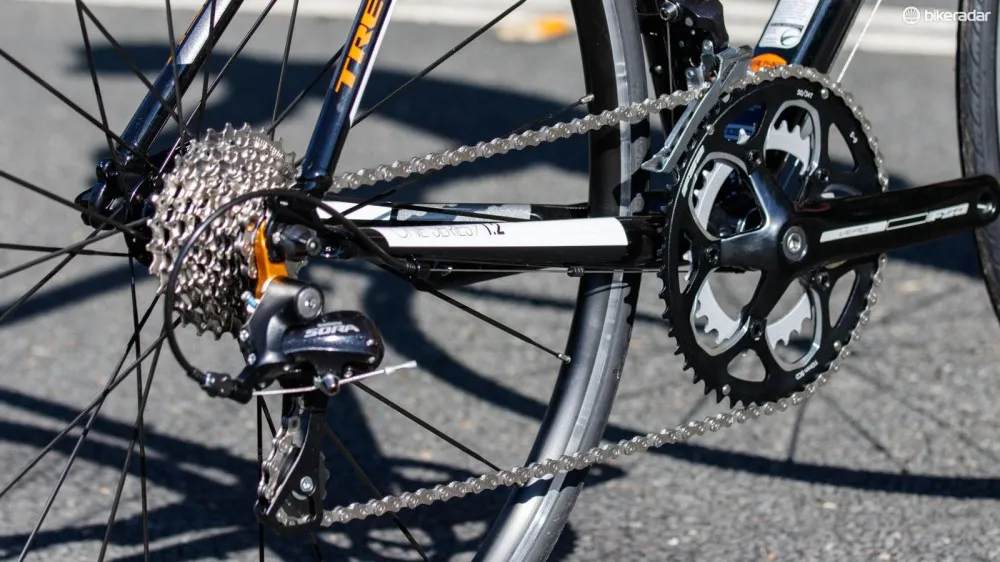
Rack mounts sit out of the frame
Built with versatility in mind, the frame offers fender mounts front and rear, with rack mounts out back too, which are ready to accept the most common aftermarket options.
With nine-speed Shimano Sora gearing, the 1.2 is on par with its peers. The shifting isn’t as fast as more expensive groupsets, but once correctly adjusted it doesn’t miss a beat.
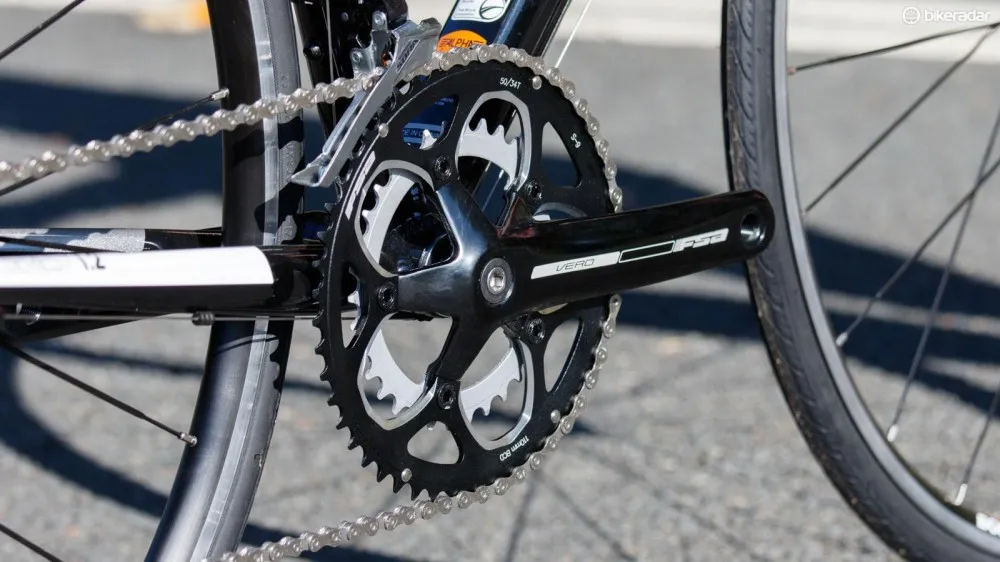
The FSA crank works, but a Shimano Sora unit works better
Up front, Trek has supplied a FSA compact crank. The shifting on this is actually pretty decent, and only marginally slower than that of a Shimano Sora item. That said, the setup isn’t as stiff and does reveal some minor chain rub against the front derailleur when pushing hard under power. Keeping it spinning, the internal-bearing bottom bracket system is an old and proven durable design, although it does come at a small weight penalty.
The wide-range 11-32t cassettes on the Specialized Allez E5 Sport and Giant Defy 3 we tested alongside the Trek show great positives for riders just getting into cycling, while still wanting to tackle hillier and longer rides. The Trek’s 11-28t cassette isn’t small and offers enough to spin up severe climbs, but neither is it generous. Bear in mind that a new rear derailleur will be needed in order to swap in a more climb-friendly 11-32 cassette.
Speaking of swapping things, the 1.2’s generic brakes are, not to put too fine a point on it, shocking. Switching brake pads for premium models is cheap option and would help a lot, but the cheap calipers themselves will remain a hindrance.
More positively, many of the bike’s Bontrager components are really good, such as the twin-bolt alloy seatpost, which is perhaps the nicest of the six bikes tested.
Similarly, while the tyres don’t do the brand justice, the wheels they wrap certainly do. The 23mm wide rims are the second widest of those tested, and ballooned the 23c tyres to an actual 24c. The build is top-notch, and the bladed spokes provide a premium aesthetic.
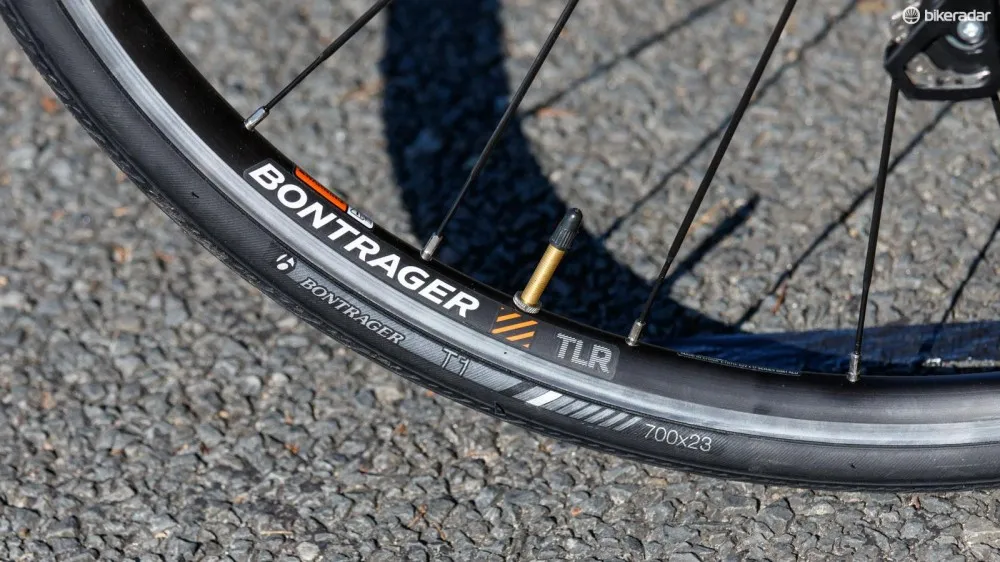
Tubeless-ready rims, that's different
These rims are ready to work with Bontrager’s ‘TLR’ tubeless system. However, such a system requires the purchase of rim strips, valves, sealant and new tyres – something that doesn’t come so cheap. On the bright side, tubeless-compatibility isn’t mentioned on any other bike as this price, and such an upgrade would solve a handful of our complaints regarding this ride.
The handlebar is quality too, although some testers complained the bar’s drop was too short and that their wrists would contact the top of the bar. The Bontrager stem looks like any other, but it cleverly hides the ‘BlendR’ feature for integrated compatibility with Bontrager’s line of bike computers and lights.
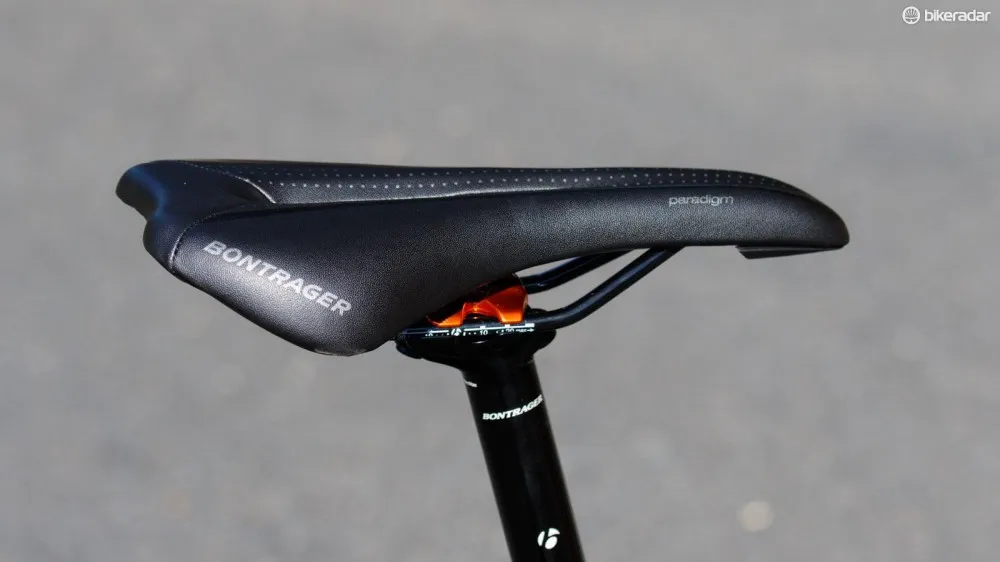
This seatpost and saddle are near-brilliant for the pricepoint
Saddles commonly divide our test teams, but the medium-width Bontrager Paradigm was one of the more universally preferred shapes. Those brand-new to cycling may be scared off by its limited padding, but its shape is a good one and worth trying.
Conclusion: greatness awaits, but at a price
The bike is good and we still enjoyed our time testing it, but that’s just not enough when some of the competition is great.
This all said, the 1.2’s issues are easily fixed. If you were to change the tyres and brake calipers you’d have yourself a pretty solid starting bike without issues. However, you'd probably also have reached into a price point where bikes feature Shimano Tiagra components, and give riders fewer headaches over having to make such upgrades.
Click through the gallery up top for a closer look at this bike. If you haven't already, be sure to read the full 2016 budget road bikes grouptest here.
null
